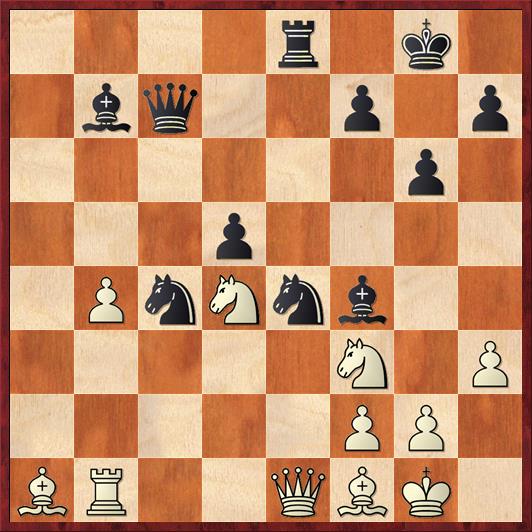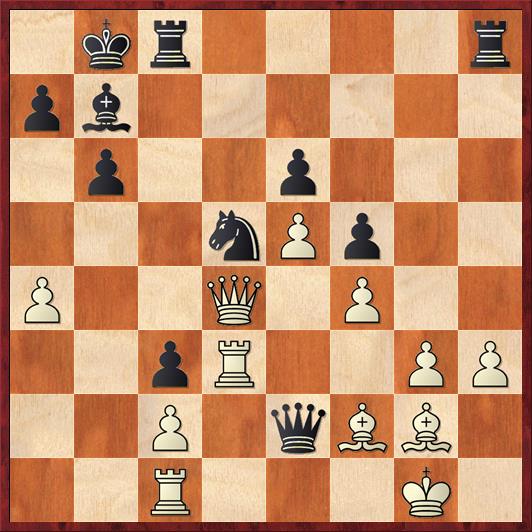When you are an adult playing chess in the San Francisco Bay area, it sometimes feels as if you are that last person holding your finger in the dike, trying to keep the sea of young players from completely wiping out the older generation. Sometimes, the old folks actually do win. And then there are times when the kids smash through the dike, around the dike, and over the dike, and nothing and no one can stand in their path. That was this weekend at the CalChess Labor Day tournament, the official championship of Northern California.
I just want you to take a look at the four top finishers.
- Christopher Yoo, 5½-½. Christopher is the #1 eleven-year-old in the country.
- Joshua Sheng, 5-1. Joshua is the #4 seventeen-year-old in the country.
- Andrew Zhang Hong, 4½-1½. Andrew is the #2 thirteen-year-old in the country.
- Rochelle Wu, 4-2. Rochelle is the #2 twelve-year-old in the country.
Now admittedly, there were some grownups who tied with Rochelle. Grandmaster Enrico Sevillano, FIDE Master Ezra Chambers, and plain ol’ National Master Derek O’Connor also scored 4-2. (Correction added later: O’Connor actually tied for third with 4½. Sorry about the mistake.) But I would say that the domination of the teenagers (and pre-teens!) was pretty complete. Christopher Yoo is most likely the youngest Northern California State Champion ever. Just four years ago he won the state championship of first-graders! Is that sick, or what?!
Here are a couple of the decisive positions from the tournament. I apologize to Grandmaster Sevillano, for whom this is going to look like Enrico’s Lost Weekend … but he was the favorite after all, and when a grandmaster goes down to defeat twice in one weekend, it’s news.
Position after 39. … Bf4. White to move.
FEN: 4r1k1/1bq2p1p/6p1/3p4/1PnNnb2/5N1P/5PP1/BR2QBK1 w – – 0 40
This position is from round three, the game Sevillano versus O’Connor. It’s the last move of the time control, so one may assume that both players are low on time. Sevillano played the White side of the Ruy Lopez, also known as the “Spanish torture,” but in this position it is White who is getting tortured. All of his pieces are passive, while Black’s pieces are dominating the board.
Nevertheless, White can continue the struggle with 40. g3, putting the question to the bishop. It can stay on the b8-h2 diagonal or it can stay on the h6-c1 diagonal, but it should not be allowed to do both.
Instead, whether it’s because of exhaustion defending an inferior position, or because of time pressure, Sevillano slips.
40. Qd1?? …
Do you see the problem with this move? O’Connor may have had only seconds left, but against a grandmaster you won’t get any more chances like this one!
40. … Nxf2!
Ouch! This really isn’t even a sacrifice, because after 41. Kxf2 Be3+ 42. Ke2 Bxd4+ 43. Kd3 Bxa1 Black gets his piece back and another one to spare, because 44. Rxa1 would run into a king-queen fork with 44. … Nb2+. Sevillano tried for some trickery with 41. Qa4, but after 41. … Ra8 Black had, as they say, the pawn and the compensation, and went on to win very easily.
O’Connor, by the way, is also a bit of a chess newcomer, although he’s in his twenties. He played only a small number of tournaments as a teenager, but then moved to Berkeley after college, started teaching at the Berkeley Chess School around 2015 or 2016, and also started playing in tournaments himself. His rating is still going up rapidly (this tournament moved him from 2312 to 2340), and one has to think that these are rating points he could have gained as a teenager if he had been playing chess back then.
Sevillano’s loss to O’Connor set up an exciting last round matchup between Sevillano (with a 4-1 score) and Yoo (who had a 4½-½ score). Because Sevillano was a half-point behind, he could not play for a draw, and this turned out to be quite important. Around move 30 Yoo gave Sevillano a chance to claim a draw by repetition. To his credit, the grandmaster would not accept a draw — but that put pressure on him to create an attack where one really didn’t exist. Then this disaster happened.
Position after 34. … Rc8. White to move.
FEN: 1kr4r/pb6/1p2p3/3nPp2/P2Q1P2/2pR2PP/2P1qBB1/2R3K1 w – – 0 35
In this position, which came from a Winawer Variation of the French Defense, Black (Sevillano) has just moved his rook from d8 to c8. It’s hard for me to figure out what he was thinking here. The pawn on c3 was not really in danger, but something else in Black’s position is in grave danger…
35. Bf3! …
This traps the queen. Although Black does have a way out, sort of (see next note), the ransom is too high.
35. … Rxh3?
Maybe 35. … Nxf4 would have had a better chance at rattling his young foe. If 36. Bxe2 Nxe2+ wins the queen back by a fork, and if White avoids the fork with 37. Qd6+ Ka8 38. Bxe2 Nxe2+ 39. Kf1 Nxc1, Black has a ton of compensation. Instead, White should just play 36. Qxf4 Rxh3 (again, trying to rattle White — the queen is still taboo because of mate on h1) 37. Bxb7 Kxb7 38. Qf3+ with a won endgame for White.
I don’t know if 35. … Rxh3 was a miscalculation or if Sevillano just gave up. It really is jarring to see a grandmaster give away his queen for essentially nothing.
36. Bxe2 Nxf4 (too late) 37. Kf1 Bg2+ 38. Ke1 Rh1+ 39. Bg1 Nh3 40. Bf1 Rxg1 and Black resigned. After 41. Qxg1 the win for White would have been child’s play (literally).
Congratulations to our new eleven-year-old state champion!
P.S. Some of you might be wondering: How did I do in the tournament? I decided not to play. It was a tough call, but I’ve been having some sleep issues, which my doctor calls “dream enactment behavior.” It’s when you thrash or move violently during your dreams. That’s really only a symptom; the likely diagnosis is REM sleep disorder. He has prescribed sleep medication to see if that can control the behavior, and I just didn’t want to play in a tournament the first weekend after starting on the sleeping pills.





{ 5 comments… read them below or add one }
Hey Dana, great recap of the event (and not just because I got a mention!). I’d like to point out that I scored 4.5-1.5, and not 4-2. But I can’t complain much when you’ve included my diagrammed win over a Grandmaster. Cheers!
Thanks for the comment and the correction. Actually I would like to have shown more of your game, but I decided that for a recap I should just keep it simple. I was fascinated by the way that Black took over in your game against Sevillano. Seemed as if he was just waiting for you to make a mistake and he waited too long, with no real plan. Maybe his last chance to equalize was 30. Bd4, with the idea of giving up a pawn for an initiative with 30. … Bxd4 31. Qxd4!? Rybka calls it equal, but it’s a dynamic equality with chances for both sides.
After 30. Nd4 his dark-square bishop never got in the game, and all of his other pieces too were just standing around. Terrific game by you! Is this your first win ever over a grandmaster?
Hi Dana, I appreciate the kind words about my game. Taking a step back to look at it afterwards, white definitely went too passive waiting for me to make a mistake, but during the game I wasn’t nearly that confident. In serious time pressure, basically playing off the increment because there was no second time control, I avoided all trades and funneled my pieces towards white’s position for counterplay without being entirely aware that things were actually turning in my favor. Then, I was suddenly winning with 40… Nxf2
This is my second win over a grandmaster, my first being also against GM Enrico Sevillano in Reno, 2017, shortly after I made the NM title. That game was pure luck, as I hung a pawn for nothing, and then won a piece in one of the most desperate time scrambles I’ve ever had, whereas this game actually felt like I didn’t make any serious mistakes. I’ve drawn a few GMs in other events. Hopefully I can make up for lost time like you and few others have said, but the fact remains that chess is undoubtedly a young person’s game!
Hello Derek.
I was wondering if Severino’s error 35… Rxh3 was one of those finger-slips, where you accidentally play the second move of your analysis first. Perhaps he meant to play 35 … Nf4 first. Did he discuss this with you?
Hi Mike! You got the two games mixed up. 35. … Rxh3 was in the Christopher Yoo game. Although if Christopher is reading this somewhere, I’d love to know the answer!